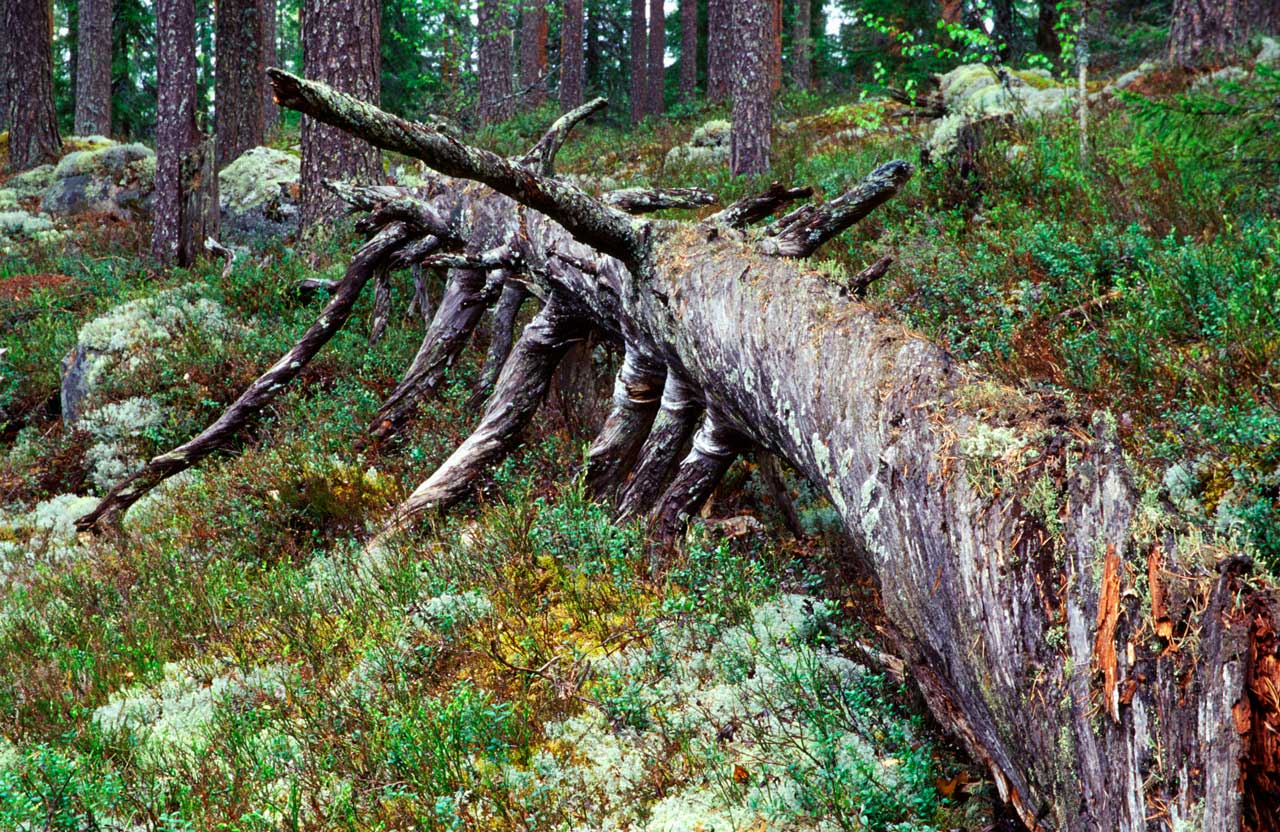Likin' Lichen
You may notice them as different coloured patches on the trucks, branches and twigs of the trees. Lichens are fungi. They live by being fed sugar by algae (microscopic plants)inside their structure in a mutual relationship called symbiosis.
Both lichen and algae derive all their other needs from the air and rain. They do no harm to the trees. They are eaten by snails and other little beasts, providing food for larger animals and supporting the food chain. They differ from mosses by not having any little green (or brownish) leaves.
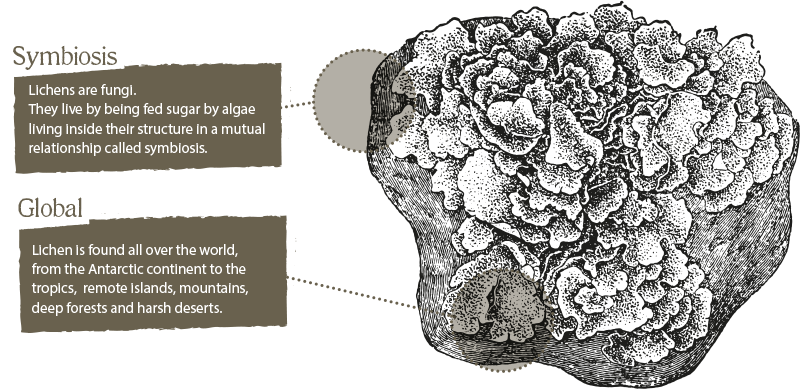
There are about 1,900 different species in Britain and Ireland (15,000–20,000 in the world) and almost 150 have been recorded at Westonbirt.
They differ in colour, structure and size. Lichens grow on stones and rocks, on the ground, under water in very clean streams and rivers as well as on trees. On trees, some lichens grow away from the bark into the air (fruticose or shrubby), some creep along the surface (foliose or leafy) of the bark and some grow sealed to the bark as a crust (crustose). The shrubby lichens are commoner in the west of Britain where the air is damper.
Lichens reproduce through spores and only the fungus can do this so whenever a new patch of lichen appears, a spore must find algal cells, of the right strain, in the bark to live with. Some lichens can also reproduce by shedding minute fragments which include fungus and alga so avoiding the hazard of a chance meeting of spore and free living alga.
Lichens are very sensitive to air pollution and in the past they were absent from towns and cities due to sulphur dioxide from burning fossil fuels. Now this has been reduced but many lichens in town and country are now threatened by nitrogen pollution – ammonia from farming and nitrogen oxides from vehicles. The bright orange-yellow lichen (Xanthoria) likes the nitrogen and occurs abundantly on trees in towns, along roads and in farmland indicating high levels of nitrogen pollution in the air.
Lichen structures
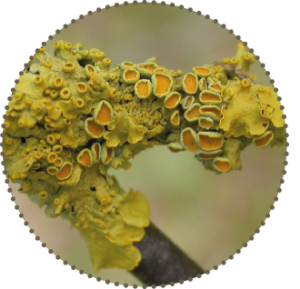
Crustose (crusty)
Flat lichens that cover substrate like a shallow crust. They cannot easily be removed without damaging the substrate or lichen. Such as the pin-head lichen, Calicium viride.
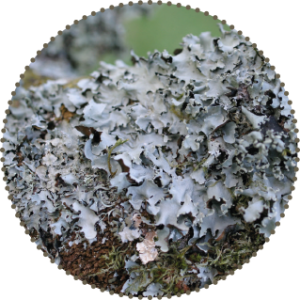
Foliose (leafy)
Leaf-like lichens with lobed edges and distinct upper and lower surfaces. They are attached to the substrate by the lower surface. Such as the tube lichen, Hypogymnia physodes.
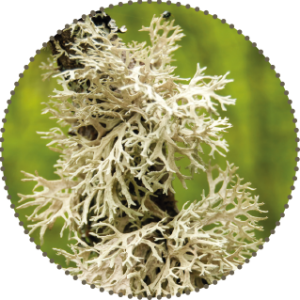
Fruticose (shrubby)
Shrub-like or wispy lichens with rounded or flattened branches. They are attached to substrate by a single point. Such as the oakmoss lichen, Evernia prunastri.
You may see dozens of different species on the trees at Westonbirt but relatively few Xanthoria because the surrounding woodland is good at mopping up the nitrogen pollution. Have a look at trees near your home and see if there is more or less Xanthoria there!
